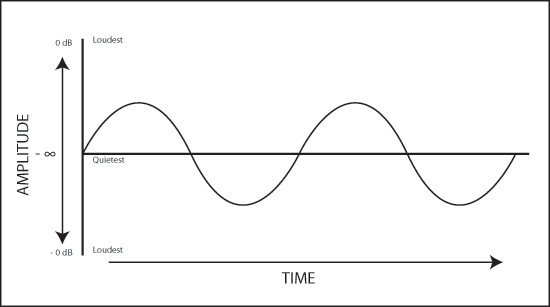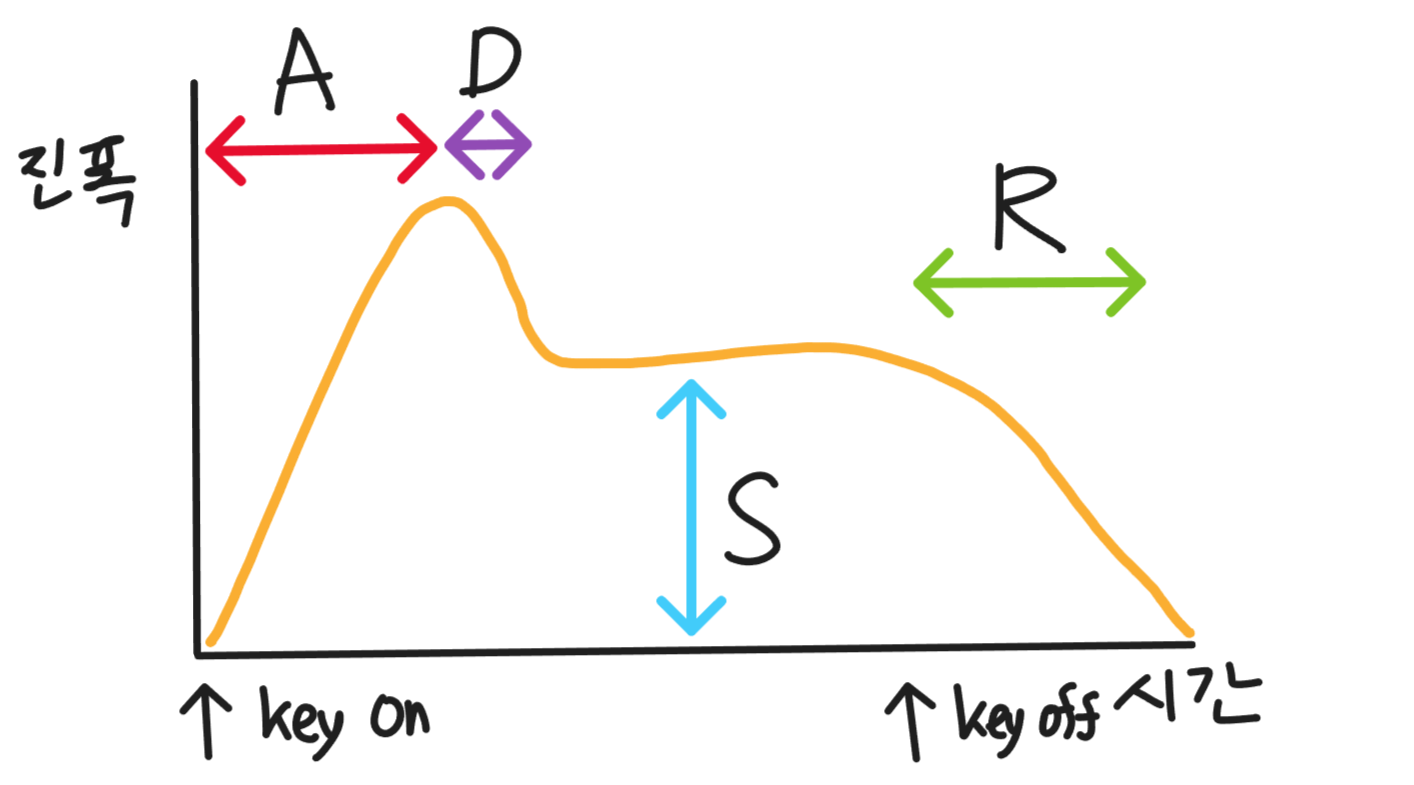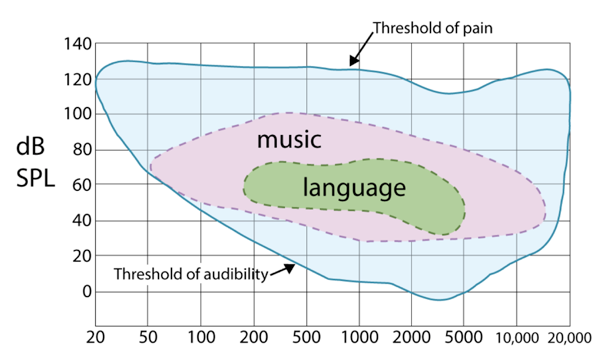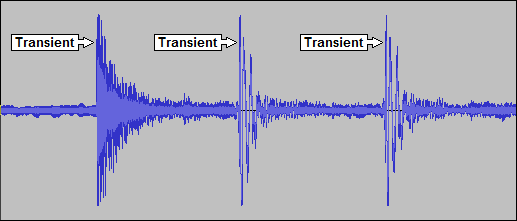문서의 이전 판입니다!
진폭
Amplitude
진폭(amplitude)은 파동의 크기나 진폭의 크기를 나타내는 물리적인 양입니다. 파동의 진폭은 파동의 최대 변위 또는 최대 크기를 나타냅니다. 다시 말해, 파동이 중립 위치에서 얼마나 멀리 움직이는지를 측정하는데 사용됩니다.
예를 들어, 소리 파동의 경우 진폭은 공기 압력의 변화로 나타내며, 이것은 소리의 강도나 크기를 결정합니다. 더 큰 진폭은 더 강한 소리를 나타내며, 작은 진폭은 더 약한 소리를 나타냅니다.
진폭은 일반적으로 파동의 중심에서 양의 방향과 음의 방향 양쪽으로 측정됩니다. 진폭은 파동의 최소점(음의 진폭)에서 최대점(양의 진폭)까지의 거리로 나타낼 수 있습니다. 이것은 파동의 진폭이 얼마나 큰지를 나타내며, 파동의 에너지와 강도를 표현하는 데 중요한 역할을 합니다.
Amplitude is a physical quantity that represents the size or magnitude of a wave or oscillation. The amplitude of a wave indicates the maximum displacement or maximum size of the wave. In other words, it measures how far the wave moves away from its neutral position.
For example, in the case of a sound wave, amplitude is represented by changes in air pressure and determines the intensity or magnitude of the sound. A larger amplitude corresponds to a louder sound, while a smaller amplitude corresponds to a quieter sound.
Amplitude is typically measured from the central position of the wave to both the positive and negative directions. It can be expressed as the distance from the minimum point (negative amplitude) to the maximum point (positive amplitude) of the wave. This measurement indicates how large the wave's amplitude is and plays a crucial role in describing the wave's energy and intensity.
Amplitude is used to explain the characteristics of waves and to compare the sizes of different waves. It is an important physical quantity in various fields, including acoustics, optics, and electronics.
엔벨로프
오디오 엔벨로프는 시간 경과에 따른 음파의 모양을 말하며 일반적으로 ADSR(Attack, Decay, Sustain, Release)의 네 가지 파라미터로 설명됩니다. 이 파라미터는 사운드가 시작되는 순간(Attack)부터 안정된 상태에 도달하는 지점(Sustain), 종료되는 지점(Release)까지 시간이 지남에 따라 사운드가 어떻게 변하는 지를 설명합니다.
어택(Attack)은 음파의 볼륨 또는 진폭의 초기 상승을 말하며 소리가 최고 수준에 도달하는 속도를 나타냅니다. 디케이(Decay)는 볼륨 또는 진폭의 후속 감소를 말하며 초기 어택 후 소리의 볼륨이 얼마나 빨리 또는 느리게 감소하는지 설명합니다. 서스테인(Sustain)은 음량이나 진폭이 일정하게 유지되는 소리의 정상 상태 부분을 말합니다. 릴리스(Release)는 음량 또는 진폭의 최종 감소를 의미하며 서스테인 부분 이후 사운드가 얼마나 빨리 또는 느리게 사라지는지를 나타냅니다.
오디오 엔벨로프의 모양은 소리의 인지 품질과 특성에 상당한 영향을 미칠 수 있습니다. 예를 들어, 빠른 어택과 감쇠는 날카롭고 타악기적인 사운드를 생성할 수 있는 반면, 느린 어택과 감쇠는 보다 부드럽고 지속적인 사운드를 생성할 수 있습니다. 유사하게 긴 서스테인 부분은 웅웅거리거나 지속되는 사운드를 생성할 수 있는 반면 짧은 서스테인 부분은 스타카토 또는 뽑아내는 사운드를 생성할 수 있습니다.
Envelope
Variations in the level of sound over time in musical instrument sounds.
The audio envelope refers to the shape of a sound wave over time and is typically described by four parameters known as ADSR (Attack, Decay, Sustain, Release). These parameters explain how the sound changes as time progresses, from the moment the sound begins (Attack) to when it reaches a stable state (Sustain) and eventually ends (Release).
Attack represents the initial rise in volume or amplitude of the waveform and indicates how quickly the sound reaches its peak level. Decay refers to the subsequent decrease in volume or amplitude following the initial attack and describes how fast or slow the sound diminishes. Sustain represents the portion of the sound where volume or amplitude remains constant. Release signifies the final decrease in volume or amplitude, indicating how quickly or gradually the sound fades away after the sustain phase.
The shape of the audio envelope can have a significant impact on the perceptual quality and characteristics of the sound. For instance, fast attack and decay can produce sharp and percussive sounds, while slow attack and decay can result in smoother and sustained sounds. Similarly, a long sustain phase can create continuous or droning sounds, whereas a short sustain phase can produce staccato or plucked sounds.
- A: Attack
- D: Decay
- S: Sustain
- R: Release
Attack
어택(Attack)은 소리가 발생하고 최대 볼륨에 도달하는 데 걸리는 시간을 나타냅니다. 일반적으로 소리가 갑자기 나타나는 시작 부분을 가리킵니다. 어택 시간이 짧을수록 소리는 더 빠르게 최대 볼륨에 도달하고, 어택 시간이 길면 천천히 증가하여 부드러운 시작을 만듭니다.
Decay
감쇠(Decay)는 소리가 공격 후에 서서히 감소하는 시간을 나타냅니다. 즉, 어택(Attack) 이후에 볼륨이 감소하는 속도를 제어합니다. 감쇠(Decay) 시간이 짧을수록 소리는 빠르게 사라지고, 감쇠(Decay) 시간이 길면 소리는 천천히 감소합니다.
Sustain
서스테인(Sustain)은 소리가 감쇠(Decay)가 끝난 후에 유지되는 시간을 나타냅니다. 서스테인(Sustain) 레벨은 일정한 볼륨을 유지하며, 소리의 지속 시간을 결정합니다. 일반적으로 이 시간 동안 소리는 일정한 레벨로 유지됩니다.
Release
가청 한계
트랜지언트
트랜지언트(Transient)란 짧은 시간 동안 발생하는 높은 진폭의 소리 변화를 나타냅니다. 이는 소리가 급격하게 변하는 순간을 지칭하며, 주로 소리의 시작 또는 끝 부분에서 나타납니다. 트랜지언트는 짧은 시간 동안 강한 진동을 가지며, 순간적으로 소리의 에너지를 높이는 현상입니다.
일반적으로 트랜지언트는 소리의 어택 부분 또는 감쇠부분에서 발생하는데, 예를 들어, 악기를 연주할 때, 줄을 강하게 튕겨서 소리를 내거나 드럼을 칠 때, 손끝이나 망치 등으로 인해 소리의 에너지가 급격하게 변화합니다. 이러한 순간적인 진폭 변화는 소리의 품질과 특성을 결정하며, 음악에서는 악기의 음색과 공격적인 효과를 형성하는 데 중요한 역할을 합니다.
트랜지언트는 음에서 가장 많고 복잡한 배음 정보를 담고 있습니다. 이러한 특성으로 인해 트랜지언트는 소리의 청취적 중요한 부분을 형성하며, 음향 처리 및 음악 제작에서 주요한 관심사 중 하나입니다.
Transient
A transient refers to a sudden, high-amplitude change in sound that occurs over a short period of time. It typically signifies moments when the sound undergoes rapid variations, often occurring at the beginning or end of a sound event. Transients exhibit brief bursts of intense vibration within a sound, causing an instantaneous surge in the sound's energy.
Transients are commonly associated with the attack or decay portions of a sound, such as when a musical instrument string is plucked forcefully, resulting in the initial burst of sound, or when a drum is struck vigorously, creating an abrupt onset of sound energy. These momentary changes in amplitude play a crucial role in defining the quality and characteristics of sound, particularly in music, where they contribute to an instrument's timbre and create impactful, dynamic effects.
Transients contain a wealth of complex harmonic information within a sound, making them a significant aspect of auditory perception. As a result, transients are a key focus in sound engineering, music production, and audio processing.
볼륨
[공지]회원 가입 방법
[공지]글 작성 및 수정 방법




